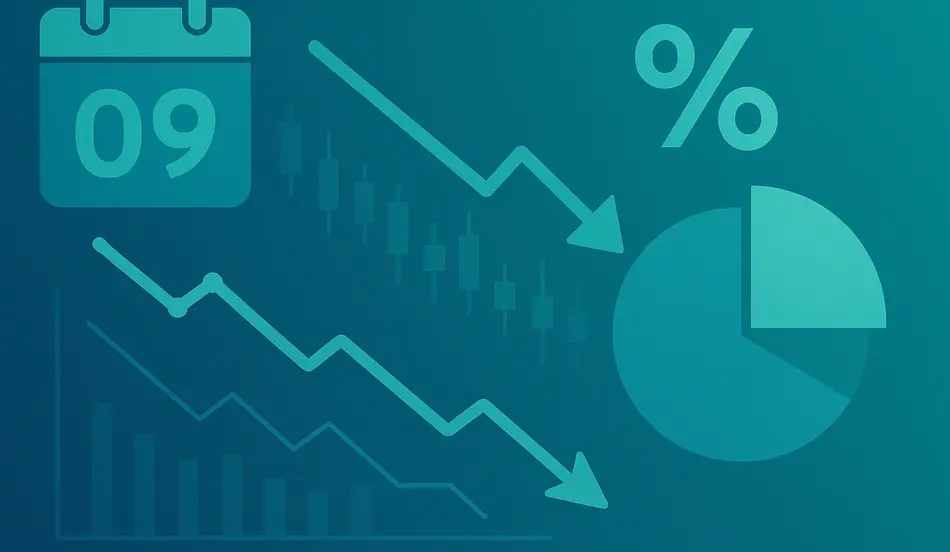The chances of a U.S. Federal Reserve interest rate cut in September have jumped sharply after the release of July inflation data, showing price growth easing for the second month in a row.
According to the CME FedWatch Tool, market-implied odds of a September rate cut surged from around 86% to over 94% following the data release. The Consumer Price Index (CPI) report showed core inflation—which excludes volatile food and energy prices—slowing toward the Fed’s 2% target, providing policymakers more room to consider easing monetary policy.
Why the Inflation Report Matters
The inflation slowdown has two key implications for the Fed:
- It reduces pressure to maintain restrictive interest rates.
Higher borrowing costs have already slowed consumer spending and weakened business investment, especially in interest-sensitive sectors like housing and manufacturing. - It supports the Fed’s dual mandate.
With inflation stabilizing, the central bank can focus more attention on supporting employment—particularly important given slowing job growth and rising unemployment.
Labor Market Context
July’s jobs report added urgency to the conversation. The U.S. economy added just 73,000 jobs, missing economists’ forecasts. Worse, May and June’s figures were revised down by a combined 258,000 jobs. The unemployment rate edged up to 4.2%, the highest since early 2023.
This pattern suggests that the labor market, while not collapsing, is losing momentum—something the Fed will be reluctant to ignore.
Market Reaction
The reaction on Wall Street was swift:
- Stock indexes rallied on expectations of lower borrowing costs.
- Bond yields fell sharply, signaling investor confidence in an imminent policy shift.
- The U.S. dollar weakened, reflecting anticipated lower returns for dollar-denominated assets.
Plan Your Hiring Before the Rate Shift
With a Fed rate cut on the horizon, now is the time to secure top talent before the market heats up.
Post a Job Now →Potential Rate Cut Path
Most analysts expect the Fed to start with a 0.25 percentage point cut at its September 17 FOMC meeting, followed by at least one more before year-end. The path beyond that will depend on:
- Whether inflation continues to trend lower
- How the job market evolves over the next few months
- Global economic conditions, especially trade tensions and tariff impacts
Sector Impact Analysis
- Housing: Lower mortgage rates could help revive home sales and construction projects, providing a lift to builders, real estate agents, and mortgage lenders.
- Retail: Consumers may feel more confident about spending, particularly on big-ticket items financed through loans.
- Manufacturing: Cheaper credit may boost capital investment, though global trade frictions could still limit export growth.
- Technology & Startups: Easing rates could improve funding conditions for venture-backed firms.
Risks of Moving Too Quickly
While a rate cut could boost growth, it carries risks:
- Reigniting Inflation: Lower rates could fuel spending in sectors already facing supply constraints.
- Financial Market Overheating: Rapid rate cuts can encourage speculative investments, increasing asset bubble risks.
FAQ: Inflation and Fed Rate Cuts
Q1: What is core inflation?
Core inflation excludes food and energy prices, offering a clearer view of underlying price trends.
Q2: Why would the Fed cut rates if the economy isn’t in a recession?
To prevent a slowdown from deepening and to support employment before job losses accelerate.
Q3: How will this affect mortgages?
Rate cuts typically lower mortgage rates, making home buying more affordable.
Q4: Could rate cuts backfire?
Yes—if demand grows too quickly, it can push prices back up.
Key Takeaway: Cooling inflation and slowing job growth are aligning to push the Fed toward its first rate cut of 2025, with markets betting heavily on action in September.




